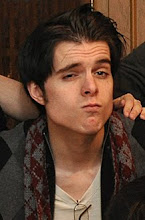At the outset here before we really get into the heart of the review, I must admit that I don't have a close or intimate knowledge of the original Maurice Sendak penned Where the Wild Things Are. To wit, I have probably read this source material maybe three times in my life; the last of which was likely a decade ago or more. I am familiar enough with the general plot of the book and of course the art style and the monsters within. When I heard that Spike Jonze was going to be making a movie based on what essentially amounts to a thirty-five sentence short story, I was intrigued yet wary of the extra material that would be needed to fill out a feature length. Still, after viewing the fantastic trailer and reading a few interviews with director Spike Jonze (of whom I've always assumed good things, but never really acclimated myself with), I was genuinely excited to go and see the movie.
Most will know the basic three part plot of Where the Wild Things Are. Main character Max misbehaves (what a little monster?) and is sent to his bedroom without dinner. Upon said banishment, Max suddenly finds himself in a deep jungle where he meets a group of monsters of which he becomes King. From here on he has wild and exciting adventures which eventually culminate in him finding his way home to his dinner and assumingly good vibes with his mother. The film version is essentially the same story though fleshed out and buffered to both evoke a more real connection with the audience, and give slightly more purpose to the existing narrative. Max is now a troubled nine year old with an estranged father and a sister he adores who is becoming tragically more adolescent and less concerned of his time. To top this all off his mother is a workaholic who cares but has trouble dodging distraction. Adding to Max's childhood frustration is his mother's new boyfriend (a blink and you miss it appearance by Mark Ruffalo). The Max of this film is clearly a troubled kid who acts out not because he's a brat, but more because he's dealing with anxieties that he doesn't quite know how to handle in his young experience. He's still a real nuisance, but you get the sense he's acting out. The movie follows suit, but instead of following the book Max runs away from home and finds a wooden boat which he of course takes and sails away to a mysterious land.
Max then meets the Wild Things and they have many dangerous if not bordering on non-sequitor adventures. This is where Jonze's film really establishes itself from its source material. The monsters who befriend Max are much more realized characters now all with their own neuroses and personality traits. Audiences at first will try to assign analogues in Max's real life to the monsters in his fantastical life. One of the most intriguing and bold moves perpetrated by the filmmakers is that no one Wild Thing wholly embodies a part of Max's real life. Instead much of the interpretation is left to the audience; a practice becoming more and more rare in big Hollywood movies these days. While the main Wild Thing, Carol (James Gandolfini), may at first seem to be an embodiment of Max's unseen father, moments of anger and jealousy over being displaced by easy-going KW (Lauren Ambrose) suggest a completely different association. This element of the film is what ends up being its strongest suit. By never deliberately taking the viewer's hand and bashing them over the head with the meaning behind each and every story beat, Where the Wild Things Are allows much like its source the ability for the audience to assign their own personal experience to the film. While the film never strays far away enough to confuse its narrative concerning Max and his own struggle, it leaves the actions of the characters within ambiguous enough that the motivations and effects of them are entirely up to the viewer. While I feel that this may deter younger viewers who perhaps would be the main draw for such a title at first glance, the value of this film I imagine will reveal itself through time as that same young audience grows to understand more deeply some of the things that are alluded to.
Where the Wild Things Are is an ambitious movie. Moving at a nearly break-neck pace, the adrenaline-fueled chaos of the proceedings effectively evokes the confusion and frustration of being a child. The monsters at once symbolize the myriad dangers both real and imagined that can surround one as a child, while at the same time being the most extreme visualizations of the disarray, anger, joy, and sorrow one feels during that time of life. The film's biggest strength may lie in its ability to remind us all of what it felt like to be a kid; that it may not have been as innocent and easy as we always remember, and that while we all grow up eventually we may have forgotten how tempestuous it was getting there.


No comments:
Post a Comment